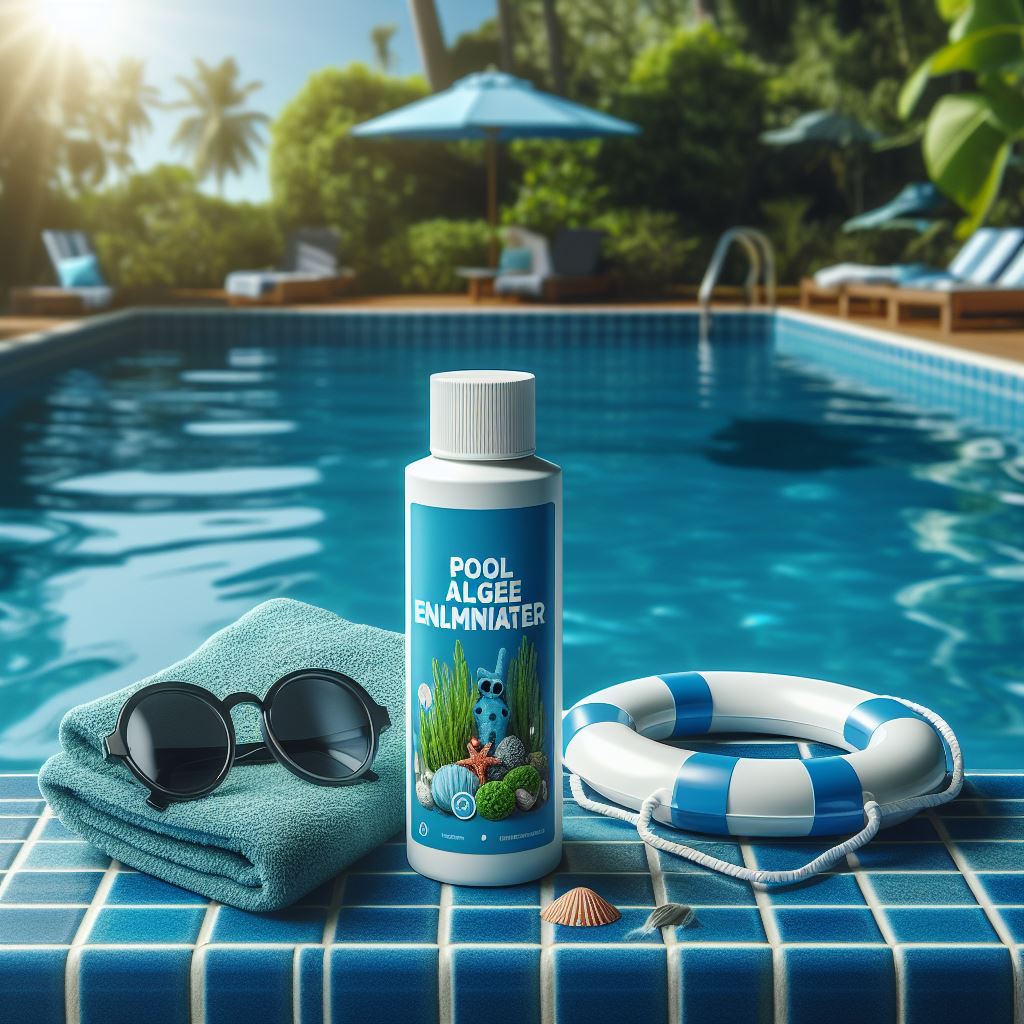Swimming pools offer a refreshing oasis, especially during the warmer months. However, maintaining crystal clear and healthy water requires understanding and effort, particularly in combating algae growth. Algae can not only make your pool look unsightly but can also create slippery surfaces that pose safety risks. Algaecide plays a crucial role in pool maintenance by preventing and treating algae blooms. This article explores when and how to add algaecide to your pool, ensuring it remains a safe and inviting place.

Understanding Algae in Pools
Before diving into the use of algaecide, it’s essential to understand what algae are and how they end up in your pool. Algae are simple, plant-like organisms that thrive in wet environments. They can enter your pool through various means, such as wind, rain, contaminated pool tools, or swimwear. Algae can flourish in pool water due to factors like sunlight, warm temperatures, imbalanced chemicals, and nutrients present in the water.
Algae growth in pools can range from a slight greenish tint to thick, floating mats. Not only does this affect the pool’s aesthetic, but it can also clog filters and reduce the effectiveness of pool chemicals.
The Role of Algaecide in Pool Maintenance
Algaecide is a chemical treatment designed to kill and prevent the growth of algae. While it’s an effective tool in your pool maintenance arsenal, it’s not a standalone solution. Regular pool maintenance, including proper filtration, circulation, and chemical balance, is essential for preventing algae growth. Algaecide serves as an additional layer of protection and treatment.
When to Add Algaecide to Your Pool
1. Routine Maintenance: Incorporating algaecide into your regular pool maintenance schedule can prevent the initial growth of algae. The frequency can vary depending on your pool’s usage, location, and environmental factors, but a common recommendation is to add algaecide weekly or bi-weekly.
2. After Heavy Usage: Pools that see a lot of swimmers can benefit from an algaecide treatment following periods of heavy use. Large numbers of swimmers introduce additional nutrients and contaminants to the water, which can promote algae growth.
3. Following Rain or Storms: Rainwater can introduce algae spores and other contaminants into your pool. Adding algaecide after significant rainfall or a storm can help prevent an algae outbreak.
4. When Opening Your Pool: When opening your pool for the season, adding algaecide can help start you off on the right foot by preventing algae from taking hold in the fresh water.
5. At the First Sign of Algae: If you notice any algae beginning to form, adding algaecide promptly can help control and eliminate the bloom before it becomes a bigger problem.
How to Add Algaecide to Your Pool
1. Test Your Water: Before adding algaecide, test your pool water to ensure that pH, chlorine levels, and other chemical balances are within the recommended ranges. Algaecide works best in balanced water.
2. Choose the Right Algaecide: There are different types of algaecide available, including copper-based and quat-based formulas. Select one that’s suitable for your pool type and the algae you’re dealing with.
3. Follow the Instructions: Read the product label carefully and follow the manufacturer’s instructions on how much algaecide to use based on your pool size and the severity of the algae problem.
4. Apply Algaecide Properly: Distribute the algaecide evenly around the pool’s perimeter, preferably in the evening or when the pool is not in direct sunlight, to maximize its effectiveness.
5. Allow the Pool to Circulate: After adding algaecide, run your pool’s pump and filtration system for at least 24 hours to ensure the chemical is evenly distributed throughout the pool.
Conclusion
Adding algaecide to your pool is a vital part of maintaining a healthy, algae-free swimming environment. By understanding when and how to use algaecide effectively, you can ensure your pool remains clear, safe, and inviting. Remember, algaecide is most effective when used as part of a comprehensive pool maintenance routine that includes regular cleaning, filtration, and chemical balance checks. By taking proactive steps and using algaecide judiciously, you can enjoy a beautiful pool all season long.

 Instant
Quote
Instant
Quote Email
Us
Email
Us